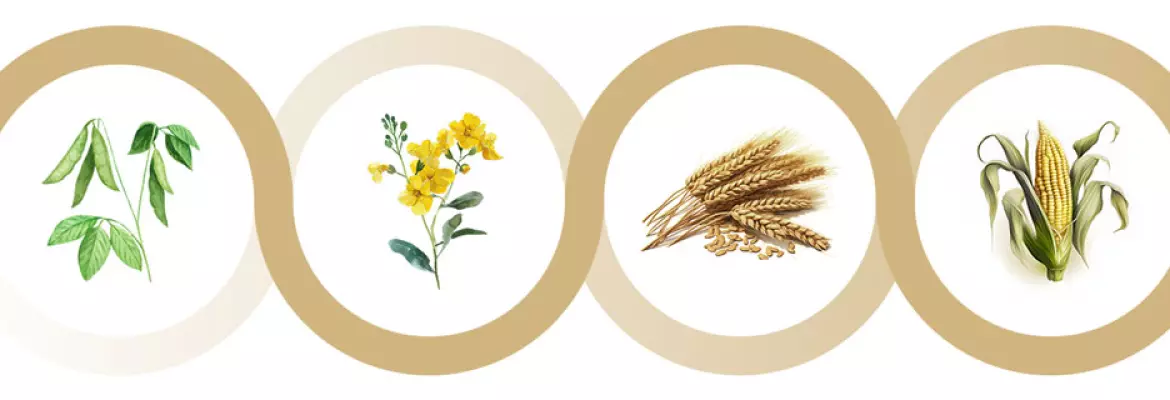
Since the Middle Ages, world agriculture has developed many crop-rotation plan possibilities, including three-year rotations with fallow land. These practices are part of so-called "agro-ecological" practices. Crop sequencing has numerous advantages. It is carefully prepared to suit the soil and climate. The type of cropping method is taken into account (conventional, organic, minimum cultivation, or direct seeding), as well as market prices for commodities and the emergence of new opportunities. Example rotations.
Simple crop rotation with 2 or 3 crops
In cereal-growing regions, crop rotations are often straightforward, involving two or three crops or even monoculture (one crop). These systems are designed for high-yield, high-profit cereals in regions with favorable conditions.
In Australia’s grain belt regions (e.g., Western Australia, South Australia, and parts of Victoria and New South Wales), a common rotation might include: Wheat – Barley – Canola or Wheat – Canola – Fallow, with canola acting as a break crop to manage weeds, diseases, and soil health. In irrigated cropping regions (e.g., southern Queensland or northern New South Wales), rotations might involve: Wheat – Sorghum – Cotton, which combines winter cereals and summer crops for efficient water use and profitability. On livestock farms, it is common to include temporary pasture or fallow.

The agronomic benefits of longer rotations: why and which crops?
Diversifying and lengthening the rotation means farmers can balance the financial risks and obtain a more stable income. Sowing a perennial crop is possible in livestock systems, or if a market exists, such as dehydration, with a rotation of maize - soya - maize - soya - maize - soya - alfalfa*4, for example. The root system of the crop improves the structure of the soil deep down. This rotation also makes it possible to spread manure at suitable times to improve soil fertility.
With rapeseed - wheat - barley rotations, the cycle can be lengthened to 6 years as follows: rapeseed - winter wheat - spring barley - maize - winter wheat - spring pea, with crop diversification. Spring crops reduce the TFI (treatment frequency index). Legumes improve soil fertility and structure. If there are industrial market opportunities, the rotation can be extended with other crops such as beet or potatoes.

Examples of crop rotations in conservation agriculture
Rotations are one of the pillars of soil conservation agriculture. Weeds, diseases, and pests can be managed easily with fewer treatments. Examples alternate dicots with monocots, and summer and winter crops. Possible plant types and associations are:
- soya or pea - rapeseed - wheat - maize
- wheat - maize - chickpea
- winter wheat - spring wheat - maize - sunflower
- spring barley - winter barley - spring pea - winter soft wheat - grain corn or silage
In soil conservation agriculture, farmers use cover crops or green manures, particularly leguminous cover crops. They play a role in weed control, preventing soil erosion, providing organic matter, and increasing soil fertility. They can be sown between two crops or even used as permanent soil cover (associated or secondary crops).
The benefits of crop rotation in organic farming
In organic farming, certain multi-year forage crops are used (grasses or legumes such as alfalfa or red clover). They improve nitrogen fixing, weed control, and soil structure. Crop turnaround is every 7 to 12 years. In cereal cropping systems, crop rotation plans are 3 to 6 years, with annual crops only. Intercrops and crop mixes are frequently used. Here are a few examples:
- alfalfa *3 - wheat - mixed cereals and protein crops - wheat - triticale
- alfalfa *2 - wheat - triticale - spring bean - wheat - spelt - maize
- alfalfa *3 - wheat - wheat - sunflower - wheat - rye - clover - wheat - wheat - triticale.
Without multi-annual crops, farmers alternate crops depending on the species:
- maize - soya - wheat
- field bean - wheat - triticale - maize
- soya - wheat - triticale - spelt.
